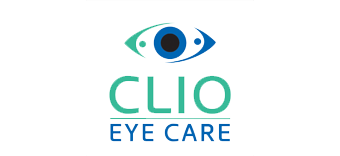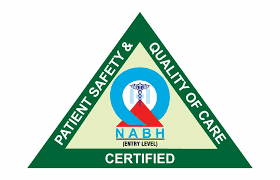TYPES OF LASIK
Our Services
Quick Consultation
Testimonials
Had a very good experience from the first consultation to the follow-up visits for my LASIK surgery. Dr. Aditi provides good information and details things really well. The staff is helpful and ensures timely reminders wherever needed. Best wishes to keep providing quality care services to their patients.
Types of LASIK Surgery
Standard LASIK
This is the most conventional and oldest form, where the laser reshapes your cornea to remove the power, but it is associated with more risk of Halos and Glare, and lower contrast. In today’s time, standard LASIK has become obsolete and is not preferred or advised.
SBK LASIK (Thin flap LASIK)
In SBK or “Thin Flap LASIK”, a specially designed microleratome is used, which allows making ultra thin flaps of as low as 110 microns. Approx. 12 microns to 16 microns of corneal tissue is used for correcting one dioptre of spectacle power. By making an ultra thin flap, we save on to some microns which enhances our range for spectacle correction. Also a thinner flap means we leave more residual stroma, which means better strength for the cornea. SBK is a must in thin cornea, but it is a preferred treatment even in normal cornea.
C-LASIK Aspheric
This Laser treatment pattern is a form of Custom LASIK. It works on preserving the Q value or asphericity of the Cornea. Asphericity of the cornea is used to describe the shape of the cornea. A ‘0’ Q value means that the cornea has a shape of a perfect sphere, which is never the case. The normal cornea usually has a negative Q value of about -0.35 which is referred to as the Prolate shape of the cornea. Ablation of the cornea with Excimer laser results in flattening making it oblate in shape.
Ablating the cornea by the Excimer laser to correct the spectacle power results in flattening of the cornea making it oblate in shape. If excessive ablation is done, it can affect the quality of vision.
C LASIK or Aspheric LASIK treatment is so designed that it helps to maintain the natural Asphericity or Q value. This helps to improve the quality of vision , and the glares, haloes are lesser in Aspheric treatment. In today’s time, this is considered as the minimum standard offered to all patients of LASIK.
Customised LASIK – Personalised Vision Correction
If you want the sharpest vision possible after laser vision correction, a procedure you definitely should consider Customised LASIK.
There are 2 Main types Customised LASIK.
- Wavefront Guided LASIK (HD LASIK)
- Topography Guided LASIK – Contoura Vision
FAQs
The following are the important criteria to fulfill before considering for any spectacle removal surgery
- Age above 18 yrs
- Stable prescription for last 1 year
- Overall good Eye Health
These are the broad criteria that must be met before planning for surgery. Of course Physical examination and a thorough assessment by our LASIK surgeon will confirm your suitability for specs removal.
No, the laser procedure itself does not hurt. Anaesthetic drops (Paracaine eye drops) are put in your eyes just prior to taking you inside the OT to numb the eyes. All you need to do is stay calm, lie down on a Table inside the LASIK OT, and follow the Surgeon’s instructions. While undergoing the LASIK, you may feel slight pressure on your eye during the procedure for a few seconds. But there is NO PAIN.
You are advised to stop using contact lenses, at least 5 days prior to procedure.
Put the antibiotic drops advised by the doctor in both eyes 4 times a day one day prior to surgery and once in the morning on day of surgery.
Wash your hair on the day of surgery as you will be advised to avoid head bath for at least 3-5 days after surgery.
Do not use any kind of eye make up or face make up on day of Surgery. Clean your eye lid margins well one day before to remove any kajal or mascara residues.
Do not apply any perfumes or deodorants on the day of surgery.
You can have a normal light breakfast before coming to the hospital for LASIK.
You will be advised to start some eye drops right from the day of surgery. Instill the drops as advised by the doctor. Avoid rubbing your eyes. You can clean your eyes with a sterile cotton swab soaked in boiled water or with sterile lid wipes, making sure you don’t touch the cornea ( black part of your eye ball).
You will be advised to wear dark goggles after the surgery, throughout the day for the first 3 days. After 3 days, you would need to wear the dark glasses only when you go outdoors, you do not need to wear them inside your house. The dark glasses help protect your eyes from dust and also helps to prevent you from touching and rubbing your eyes.
You can have your normal food after laser treatment.
Avoid smoking for at least 2 weeks as the smoke fumes can increase dryness felt in the eyes.
You can start using your phone from the very next day. Desktop, laptop usage can be done from the 3rd day onwards in a graded manner. That means on 3rd day you can spend 2 hrs on the laptop, 4th day 4 hrs, 5th day 5-6 hrs and so on. By 5th Day of Surgery most people are comfortable to resume their routine.
You are advised to avoid driving back home on the day of surgery. Most patients are comfortable to drive by the 5th post operative day. Sometimes, night driving may be a bit difficult during first few days, however the glare settles over next 2 weeks.
For females, you are advised not to use any eye make up for 2 weeks. Threading of eyebrows and eye make up may be done after 2 weeks taking care to avoid too much pressure on the eye.
After LASIK, you would be prescribed eye drops which would need to be put as advised by your doctor. The antibiotic and anti-inflammatory drops are to be put for 3 weeks in a tapering dose and the lubricant drop are continued for a month. Some patients prefer to continue the lubricant for longer period after LASIK.
Yes, LASIK Laser surgery is safe, and is one of the most common eye surgeries done today with highly successful and predictable outcomes. But as in every surgery, there are certain potential risks that you should know about. Although these risks/complications are very rare, they will be discussed with you during your counselling.
Yes. Now with newer advances, and cutting edge technology there are LASIK Platforms that can help to treat Presbyopia. For patients who are above the age of 45years, and wish for spectacle independence for distance and near, we offer SUPRACOR Presbyopic LASIK. Our surgeon will discuss this option with you during your visit.
Our LASIK surgeon is among the first few surgeons in North India who started performing SUPRACOR Presbyopic LASIK.


Thank you, Dr.Aditi, I am grateful to you. I had a very nice experience with you having done my LASIK surgery by Contura vision, I have got 6/5 vision after my specs removal surgery. Very helping staff & caring follow-ups done by the Dr. Again & Again thanks to you Dr. Aditi.